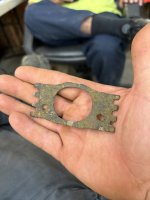Mentalfloss
Full Member
Hello everyone, I am not sure if this is anything but a rock. I found it in a hot spot with lots of flakes. I was thinking maybe some kind of paint bowl. But I don’t know, what do you think?
Amazon Forum Fav 👍
Attachments
Upvote
0


![0912081700[1].jpg](/data/attachments/198/198953-832b326bcc57587277e29bebc97ca86a.jpg)
![0912081705[1].jpg](/data/attachments/198/198962-b86490335930dd4169746afd6f511f8f.jpg)


